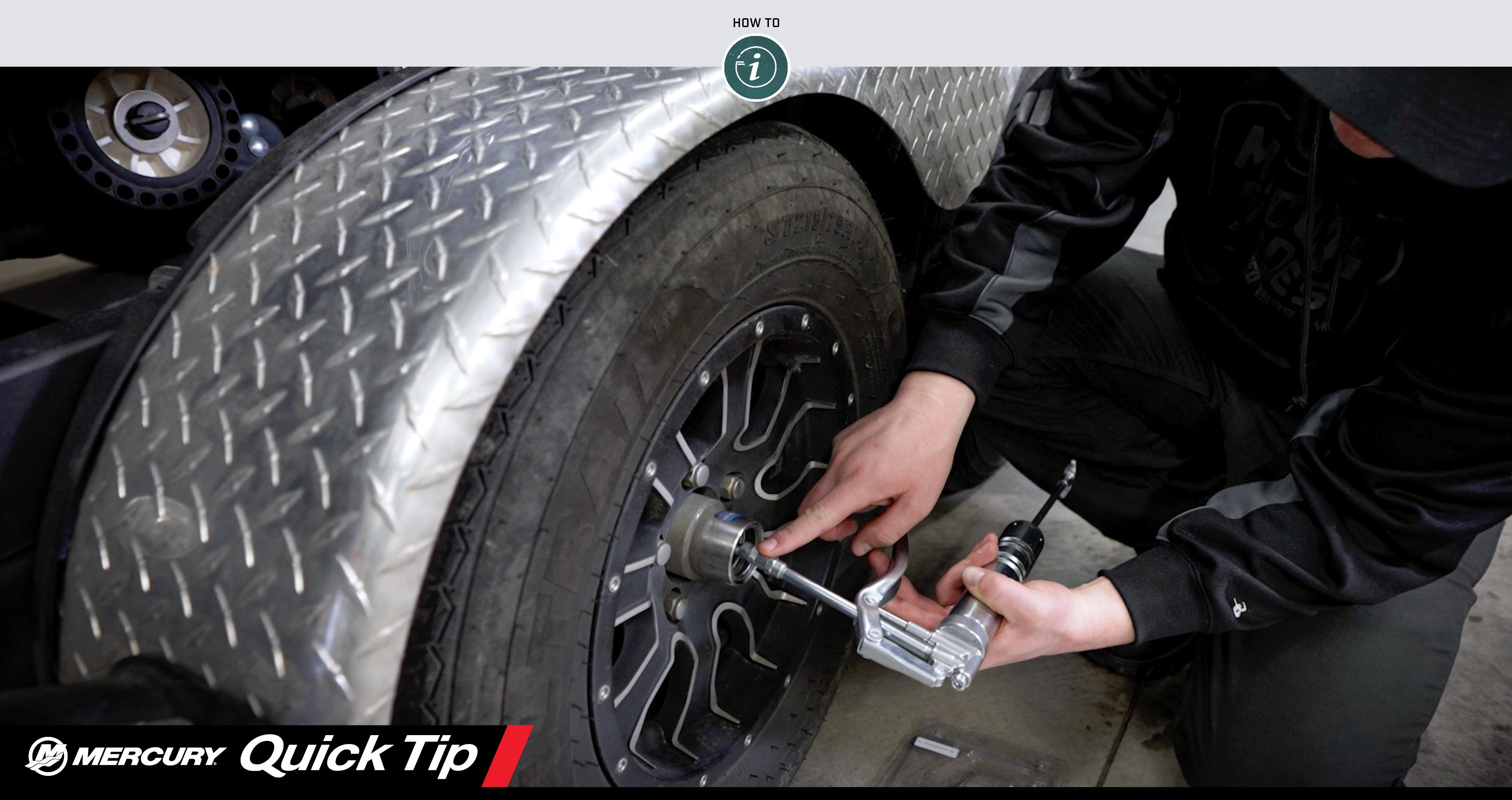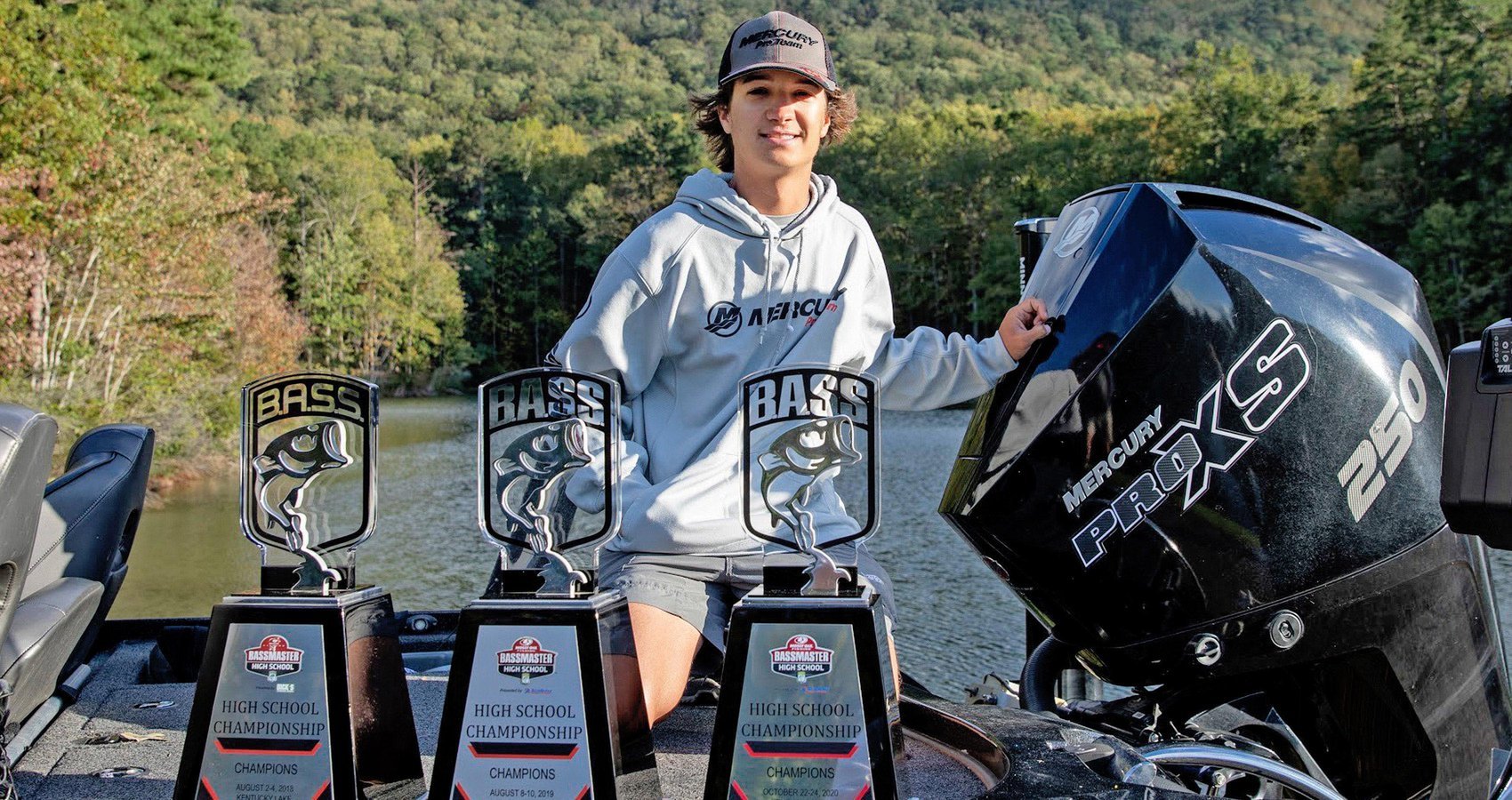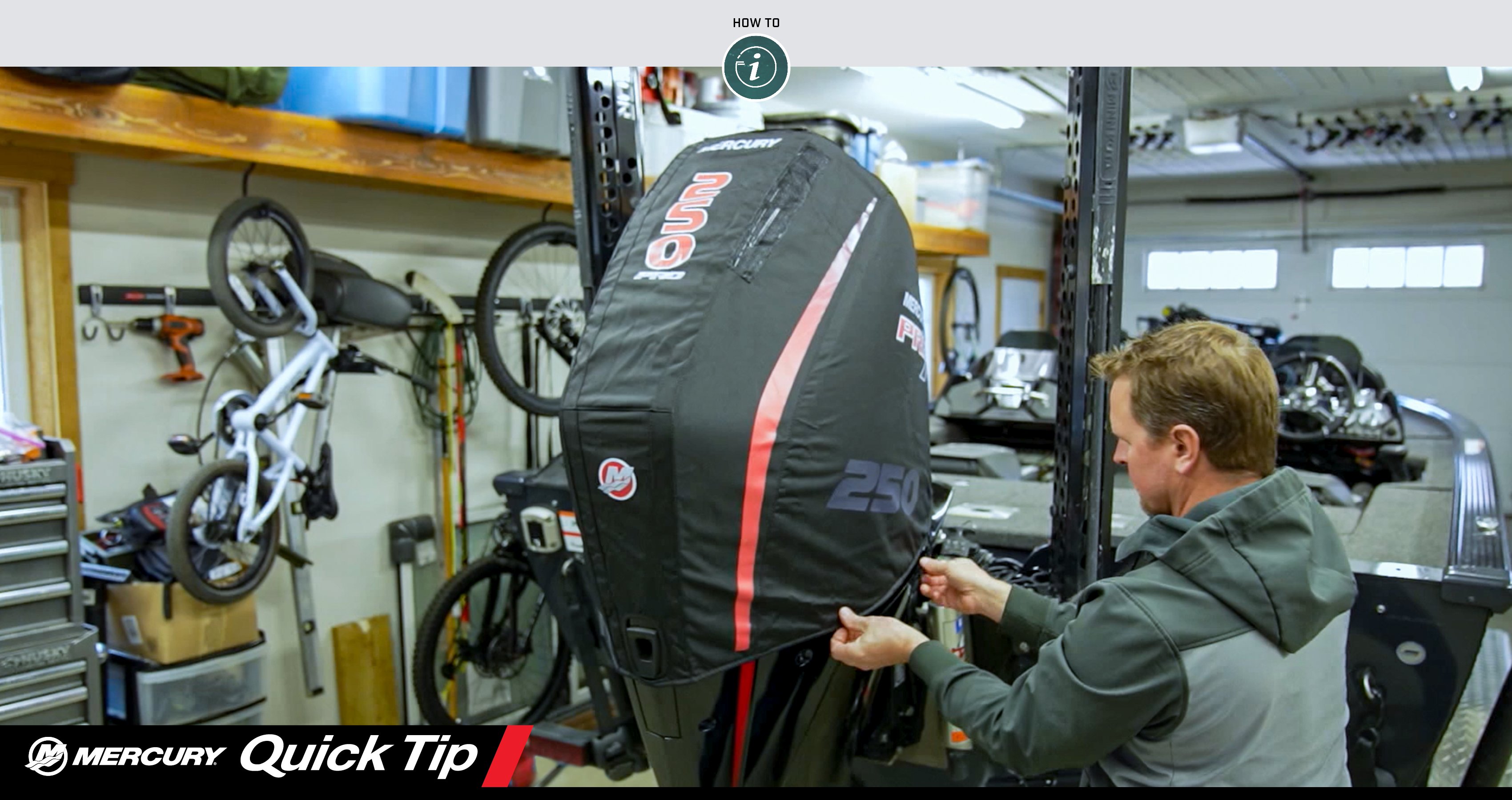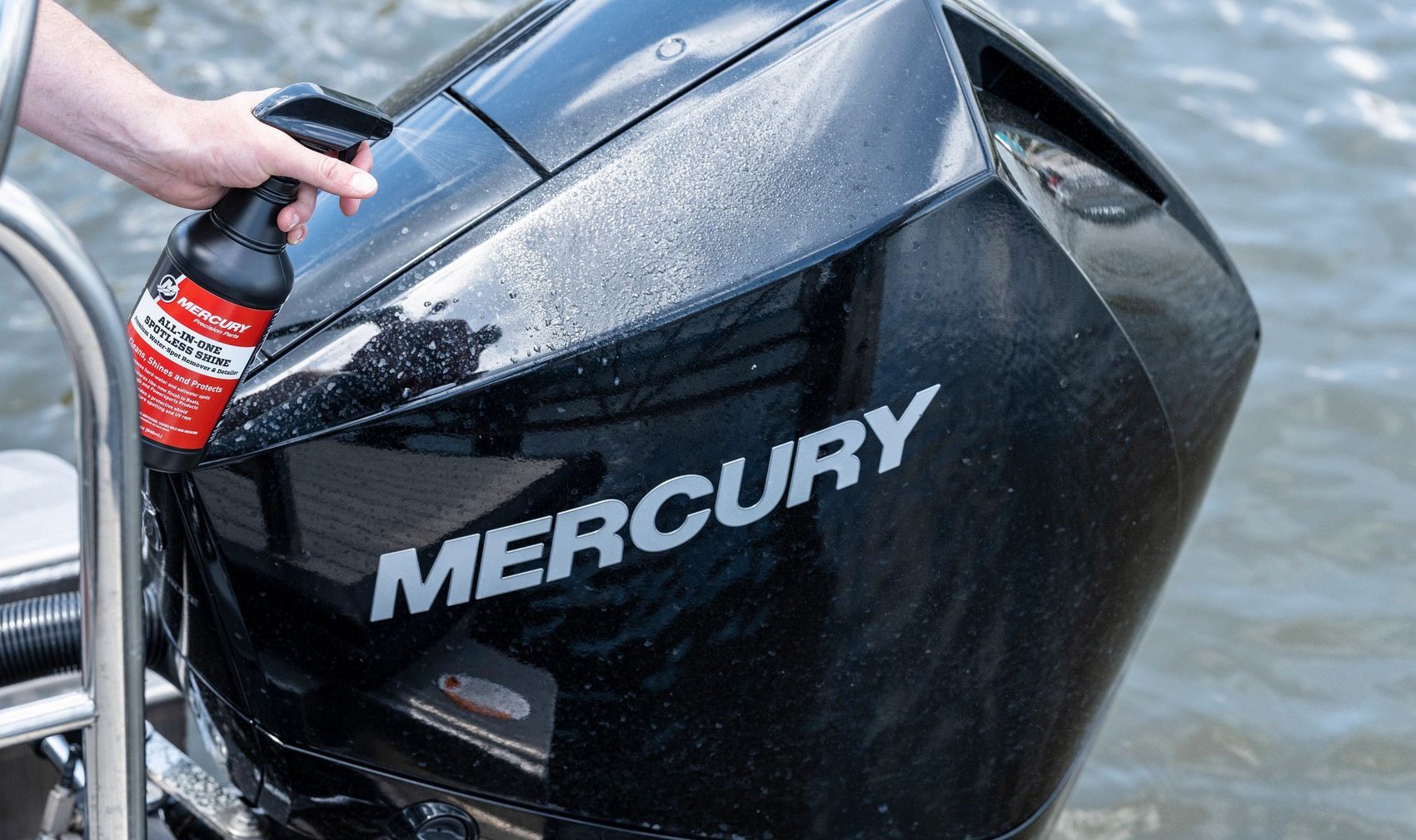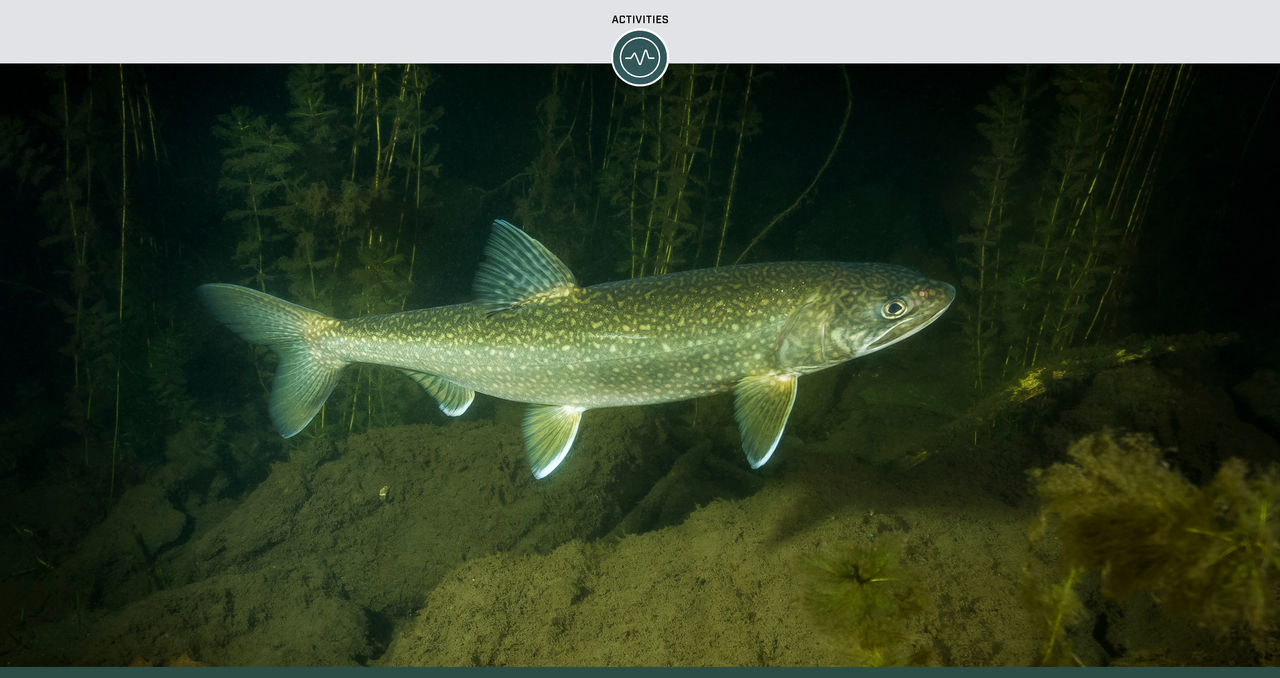“Lake trout, in my opinion, are just an amazing fish,” said Mercury Pro Team member Jeremy Smith, one of the hosts of “Lindner’s Angling Edge” and a renowned multi-species angler based in Minnesota. “They get big, they are aggressive, and they live in wild and beautiful places.”
Lake trout are a cold-water fish, and, despite a misleading moniker, this “trout” is in fact a char species within the Salmonidae family. A popular species among anglers, lake trout are found throughout the Great Lakes as well as in deep, cold-water lakes in many Northern states, certain Western states and much of Canada. Their diet can vary, but ciscoes, whitefish, smelt, alewives and other fish routinely rank high on the menu for lake trout.
According to Smith, three of the best times to catch lake trout are early spring, the summer months of July and August, and autumn in regions offering a fall fishing season. Trolling, casting and vertical jigging presentations all have their time and place for catching these aggressive, hard-pulling predators.
Here is an overview of where and how Smith catches lake trout, with a focus on tactics for fish in the 2- to 20-pound size range. For more information, and to see him in action in the beautiful wilds of laker country, check out the video below.
Spring
Troll “Warm” Water
With ice cover a recent memory and water temperatures still low, early spring is a great time to fish for lake trout. At the beginning of the season, anglers should focus efforts on shallow, warmer-water areas where the food chain is active.
As Smith explains, if the main lake is between 40 and 42 degrees Fahrenheit following ice-out, baitfish and lake trout are likely to be found in areas where the water temperature is in the upper 40s to low 50s. Good early-spring locations in Canadian Shield waters include neck-downs, areas with current, deep ditches leading into backwater bays and island complexes adjacent to shallow water.
Smith prefers flat-line trolling in early spring. Top baits are shad-style crankbaits such as No. 7, 8 or 9 Rapala® Shad Raps® and thick-bodied spoons. Trolling speeds hover around 2 mph.
Tip: While early spring is a productive time to catch lake trout, the period from late spring into early summer can be much more difficult, says Smith. You’ll need to expand your search. Fish are often scattered throughout mid-depth zones as they transition from early-spring locations to deep basins where they spend summer.
Summer
Move to Deep Basins
Lake trout fishing action heats up again in July and August. Anglers can expect to find lakers within 80- to 120-foot-deep basins, relating to points, humps and other structure, as well as bottom transitions (i.e., sand-to-mud changes).
“This time of year, vertical jigging is a really fun way to catch them,” Smith said. “The blade bait and a (Rapala) Jigging Rap® are two lures that I always have on.”
Heavy jigging spoons, as well as tubes and fluke-style plastics on jigs, are also good options. Using a lure with a fast sink rate is critical for quickly getting down into the deep-water strike zone.
Vertical jigging shines for lake trout concentrated in specific areas, but when Smith’s fish finder displays spread-out lakers, he prefers the efficiency of covering water by trolling spoons and wide-action crankbaits, such as Luhr-Jensen® Kwikfish® and Yakima Bait® FlatFish®. Consistently catching fish requires keeping baits at or just above the depth where lake trout are suspended in the water column. This is fairly easy to do when fishing from a boat equipped with downriggers. If without this equipment, an alternative is using a line snap to attach a heavy weight to the line, or using a three-way rig. Smith often uses 6- to 10-ounce clip-on sinkers for trolling lures 45 to 55 feet down at 2 to 2.5 mph.
Tip: Electronics play an important role in finding lake trout throughout the seasons. During summer, for example, Smith uses digital lake maps to locate structures within deep basins, and then surveys water using side-imaging and 2D sonar to determine the whereabouts of baitfish and lake trout.
Fall
Focus on Shoals
Lake trout are fall spawners. As such, fishing during this time is not permitted in many areas. However, in locations where the fishing season for lake trout remains open, the fall prespawn bite presents another high-octane opportunity to catch these cold-water predators.
During this time, Smith casts and retrieves lures on and around spawning shoals found in 10 to about 20 feet of water, sometimes deeper. Rattling lipless crankbaits, plastic swimbaits on jigs and spoons are some favorites, but Smith says lakers are not usually picky toward lures in the fall.
“It’s a situation when 90 percent of the fish are in 10 percent of the water, and, at this point in time, you can really choose whatever presentation you want to catch them on,” he said.
Tip: If you’re running into a bunch of trout that are biting eagerly and you’re handling a lot of fish, Smith advises against using a lure with multiple treble hooks. Lakers love to roll in the net, and those hooks can create a tangled mess and leave you vulnerable to getting stuck. That said, if that treble hook lure – say, a rattle bait – is what’s needed to get bit, then you should definitely use it. Otherwise, consider throwing a lure with a single hook.
Gear Pointers
“When it comes to rod and reel and the line … chances are you probably have a lot of the tools already to go and target lake trout,” Smith said.
If your fishing gear collection includes 7- to 8-foot-long, medium and medium-heavy rods, quality reels spooled with 15- to 30-pound-test braided line, and 14-pound-test fluorocarbon leader material, you are in good shape for fishing many of the tactics described above for lake trout ranging from 2 to 20 pounds, which is often the average size range of fish caught from many waterbodies. If you’re fortunate to fish trophy lake trout waters where there’s the potential of hooking into a 30- to 60-pound fish, you need to upsize gear and tackle. See the video below for specifics on Smith’s gear recommendations for lake trout fishing.
Tip: All of Smith’s rods have responsive tips and good flex through the midsection of the blank. These characteristics provide cushioning to help hooks stay pinned when a rambunctious lake trout cartwheels and twists on the end of the line.
Lots To Love About Lake Trout Fishing
The above is a general overview of where and how to catch lake trout during open-water seasons. Despite their misleading name, there is no confusion among anglers why fishing for this char holds so much appeal.
Smith sums it up like this: “Lake trout are really, really, really fun. If you have not fished for them, you owe yourself a trip to go experience where they live, enjoy how much they pull [and] get to watch how aggressive they can be … They’re absolutely an amazing fish, and you don’t need a ton of specialized gear to go have a blast catching them.”
For more from the Lindner’s Angling Edge crew, check out AnglingEdge.com.
All trademarks are the property of their respective owners.
